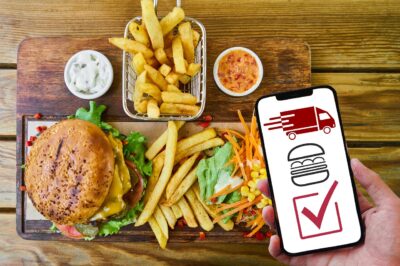The Ultimate Guide to Leveraging Food Delivery Apps for Restaurants
Introduction:
In the rapidly evolving landscape of the restaurant industry, leveraging technology has become imperative for success. One of the most significant advancements in recent years is the advent of food delivery apps. These platforms not only offer convenience to customers but also open up new avenues for restaurants to increase their reach and revenue. In this comprehensive guide, we will explore the ins and outs of leveraging food delivery apps, with a particular focus on food delivery app development.
1. The Rise of Food Delivery Apps:
The popularity of food delivery apps has soared in recent years, driven by changing consumer preferences and the increasing reliance on smartphones. Customers today seek convenience, and food delivery apps provide a quick and hassle-free way to satisfy their cravings. From the customer’s perspective, these apps offer a wide range of choices, real-time tracking, and the convenience of doorstep delivery.
2. Understanding the Benefits for Restaurants:
- Expanded Reach:
-
- Food delivery apps open up new markets for restaurants, allowing them to reach customers beyond their physical locations.
- Target a broader audience, including those who prefer the convenience of ordering from home or the office.
- Increased Revenue:
- Restaurants can experience a significant boost in sales by tapping into the large user base of food delivery apps.
- Upselling opportunities through app-exclusive promotions and offers.
- Improved Customer Loyalty:
- Loyalty programs and discounts offered through food delivery apps can help build a loyal customer base.
- Positive user experiences on these platforms can translate into repeat business.
3. Choosing the Right Food Delivery App:
- Market Research:
- Analyze popular food delivery apps in your region.
- Consider user reviews, app features, and the overall user experience.
- Cost and Commission Structure:
- Evaluate the fees and commissions charged by different platforms.
- Choose a platform that aligns with your budget and revenue goals.
- Integration and Compatibility:
- Ensure that the chosen food delivery app integrates seamlessly with your existing POS system.
- Compatibility with other technologies used in the restaurant is crucial for a smooth operation.
4. Developing Your Own Food Delivery App:
- Benefits of Custom Food Delivery Apps:
- Complete control over branding, features, and user experience.
- Ability to collect and analyze customer data for personalized marketing strategies.
- Key Features to Consider:
- User-friendly interface for easy navigation.
- Real-time order tracking and notifications.
- Secure payment gateways and multiple payment options.
- Integration with loyalty programs and promotional features.
- Hiring a Food Delivery App Development Team:
- Consider outsourcing development to experienced professionals or hiring an in-house team.
- Emphasize the importance of a user-centric design and seamless functionality.
5. Optimizing Your Presence on Food Delivery Apps:
- High-Quality Imagery and Descriptions:
- Invest in professional photos of your dishes.
- Craft compelling and detailed descriptions to entice customers.
- Strategic Pricing:
- Set competitive prices to attract customers.
- Leverage promotions and discounts strategically to drive sales.
- Responsive Customer Service:
- Provide excellent customer service through the app.
- Address queries, concerns, and feedback promptly.
6. Marketing Strategies for Food Delivery Apps:
- Social Media Promotion:
- Utilize social media platforms to create awareness and drive app downloads.
- Share engaging content, promotions, and behind-the-scenes glimpses.
- Collaborations and Partnerships:
- Partner with influencers, food bloggers, or other businesses for cross-promotion.
- Collaborate with the food delivery app for featured promotions.
- In-Store Promotion:
- Display QR codes or promotional materials within your physical location to encourage app downloads.
- Train staff to promote the app and its benefits to customers.
Monitoring and Adapting Strategies:
- Analyzing User Data:
- Use analytics tools to track user behavior on the app.
- Analyze customer demographics, popular dishes, and peak ordering times.
- Feedback and Reviews:
- Encourage customers to leave reviews and provide feedback.
- Use constructive criticism to improve service and address issues promptly.
- Adapting to Trends:
- Stay informed about industry trends and technological advancements.
- Regularly update your app to incorporate new features and improvements.
Conclusion:
Food delivery apps have become indispensable tools for restaurants looking to thrive in the digital age. Leveraging these platforms can significantly enhance a restaurant’s reach, revenue, and customer loyalty. Whether opting for established third-party apps or developing a custom solution, it’s crucial for restaurants to stay proactive in adapting to changing consumer preferences and technological advancements. By following the strategies outlined in this guide, restaurants can navigate the dynamic landscape of food delivery apps and position themselves for long-term success.
